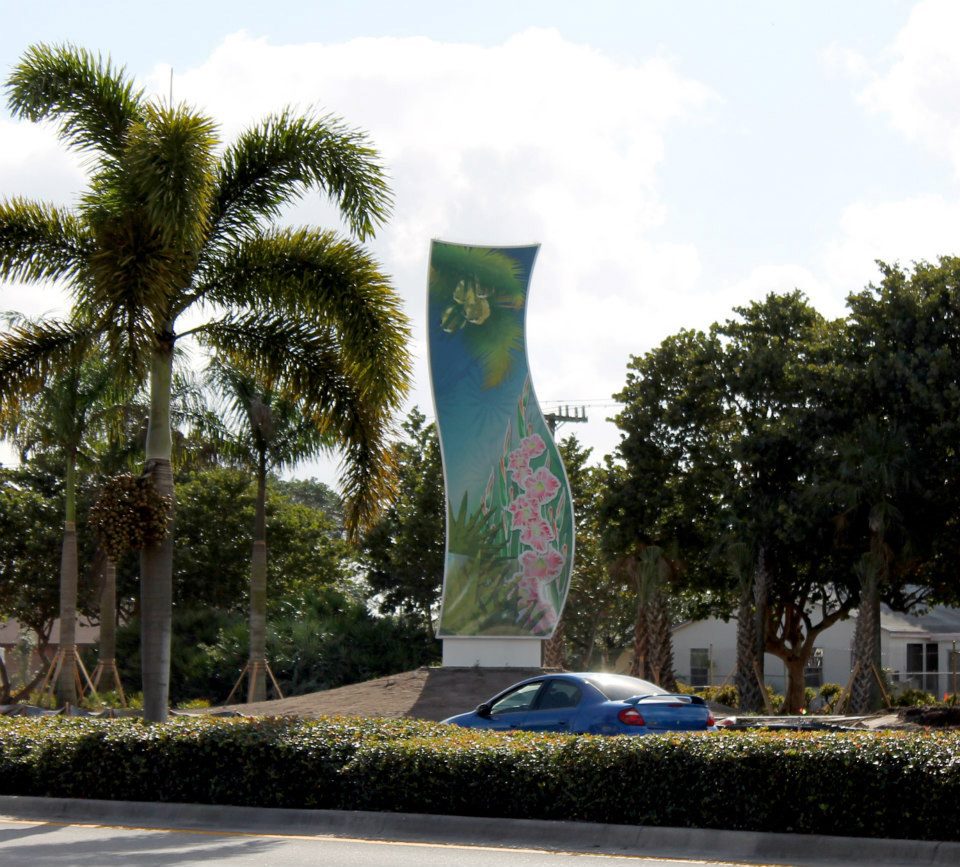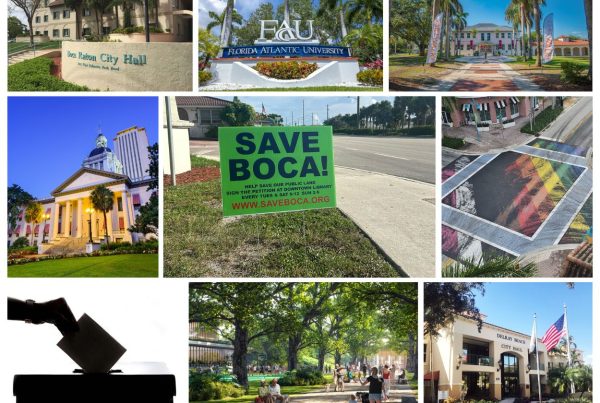West Atlantic Avenue
In 1988, the then-director of the Delray Beach Community Redevelopment Agency told residents of West Atlantic Avenue that the agency planned to bulldoze large portions of their mostly African-American neighborhoods and start over. For their own good.
Fortunately, that never happened. Bill Finley and the plan have been gone for many years, but resentment over the city’s lordly attitude lingered, even as progress from East Atlantic spread west.
Over time, however, communication and priorities improved. The mid-1990s saw the creation of the West Atlantic Redevelopment Coalition. There was community support for the Uptown Atlantic mixed-use project on the three blocks of West Atlantic between Sixth Avenue and Ninth Avenue. Last summer, the coalition held an event at the Old School Square gym to start the process of “rebranding” West Atlantic.
The next phase is here. Organizers will conduct an online survey to determine how people view West Atlantic and what they would like it to become. Anyone can take the survey at delraywarc.org. By next spring, the coalition hopes to present ways to market the area.
WARC Director Kristyn Cox-Goodwin told me Monday that the goal is not to make West Atlantic distinct from East Atlantic but to create an identity for the area, as has happened in Pineapple Grove, Artists Alley and the beach district. “We want find that target audience and figure out the missing piece.” The survey area, she said, will run from West Palm Beach to Pompano Beach.
Cox-Goodwin acknowledged the coalition’s intent to include residents. “This is totally community driven. We want to come up with a brand that they believe in.” City Commissioner Shelly Petrolia said West Atlantic residents historically had been “disenfranchised. They had no input.” She hopes that the effort can promote the area without causing massive regentrification that harms such historic black neighborhoods as West Settlers and Frog Alley.
Petrolia’s concern is on point. Delray Beach’s popularity continues to grow, and there is only so much land close to downtown. For some property owners, this could be a time to cash in. Cox-Goodwin and her colleagues want West Atlantic to grow in a way that helps residents and doesn’t drive them out.
University Housing
In September, the owners of eight acres near Florida Atlantic University asked the Boca Raton City Council to create a land-use designation under the city’s master plan called “University Housing.” It would apply to properties of at least eight acres that are within 200 feet of FAU.
In other words, the designation would be strictly for the owners of the property at 2600 Northwest Fifth Avenue. The designation would allow a maximum of 80 beds per acre. As land-use lawyer Charles Siemon acknowledged, that aligns with what the developers want to build.
Most council members were wary. They worried that the project might conflict with the work between FAU and the city to create a student-centric district six blocks south on 20th Street. They worried about police calls to another complex of college students. They did not ask the staff to take up the project. Afterward, Siemon said he would provide more information and seek more support.
Last week, he got that support. At their workshop meeting, council members heard that the Treasure Coast Regional Planning Council—which is helping the city with the 20th Street study—said the project would not pose a conflict. FAU said the added housing could help meet demand that the university can’t meet on campus. The applicant, Chicago-based CA Ventures, has built lots of student housing complexes around the country. Siemon said the rate of police calls at those projects is 57 percent lower than for calls at student complexes near FAU.
CA Ventures bought the property last January for $6 million—$2 million more than it had sold for 18 months earlier. Siemon said the company would quickly refile its application. The hope is to be open for FAU students in the fall of 2017, Siemon said, “but that will be close.”
Delray firefighter contract
There are more details about the firefighter contract that the Delray Beach City Commission will approve tonight. As with Delray’s new police contract and new police and firefighter contracts in Boca Raton, the pension savings are mostly back loaded.
The contract covers four tiers of employees. Tier 1 is retirees and firefighters who have at least 20 years on the job. For them, pension benefits won’t change. Tier 2 is firefighters with at least 10 years but fewer than 20. The “multiplier” used to calculate their benefits will decrease from 3.5 percent to 3 percent. A firefighter who works for 20 years thus will collect a pension benefit of 60 times his or her annual salary.
Tier 3 is employees with fewer than 10 years, meaning that they are not vested. Their multiplier also will drop to 3 percent. Tier 4 is new hires. Their multiplier will be 2.75 percent. They also will have the largest reduction in benefit levels and won’t have the option of early retirement.
So the city will get pension savings, but most will be in later years. Unions care first about protecting current members, and they lose the least under this deal. Retirees lose nothing. Some Northeast and Midwest cities facing much deeper pension holes have cut retirees as well.
Even with the union’s concession, the contract remains generous. Retirees still will get at least a one percent annual cost-of-living adjustment. Over time, however, Delray Beach hopes to raise salaries and make the system more focused on compensating firefighters when they are working, not when they aren’t.
Delray’s beach master plan
Also on tonight’s Delray city commission agenda is Phase 1 of the beach master plan. This phase involves the park/walkway between A1A and the dunes and the entrances to the beach, some of which look dowdy.
The city wants to complete the work by Oct. 31 of next year, in time for high season. The timetable is tight. If the commission approves the concept tonight, the staff wants to pick a contractor by early January and have work begin by April 1.
It’s hard to imagine the commission not approving the approach. It calls for attractive new pavilions, parking meters and pet watering stations. The money is in the budget. The plan grew out of community meetings. Call it a new setting for a Delray diamond.
The Mark is sold
For all the unhappiness in Boca Raton over the look of the Mark at Cityscape, the market seems very happy.
Last week, the city council followed up on a daylong discussion last April of the building’s appearance. The mixed-use Mark is the first project approved under the city’s Interim Design Guidelines. Most council members aren’t happy with the result.
Yet in September, Palm Beach Gardens-based Ram Realty sold the Mark to Monogram Residential Trust of Texas, which also owns The Franklin apartment complex in Delray Beach. The price was nearly $82 million, in large part because of the Mark’s high occupancy and rental rates. The Mark has 208 apartments, 18,000 square feet of retail space and a nearly 700-space parking garage, which has been the source of most of the heartburn about appearance.
Despite the controversy, Ram made out well. Monogram expects big things, noting how the Mark has been “amenitized”—a trending development term—to justify the rental rates. Boca at least should be happy that the Mark’s financial success reflects well on the city.








